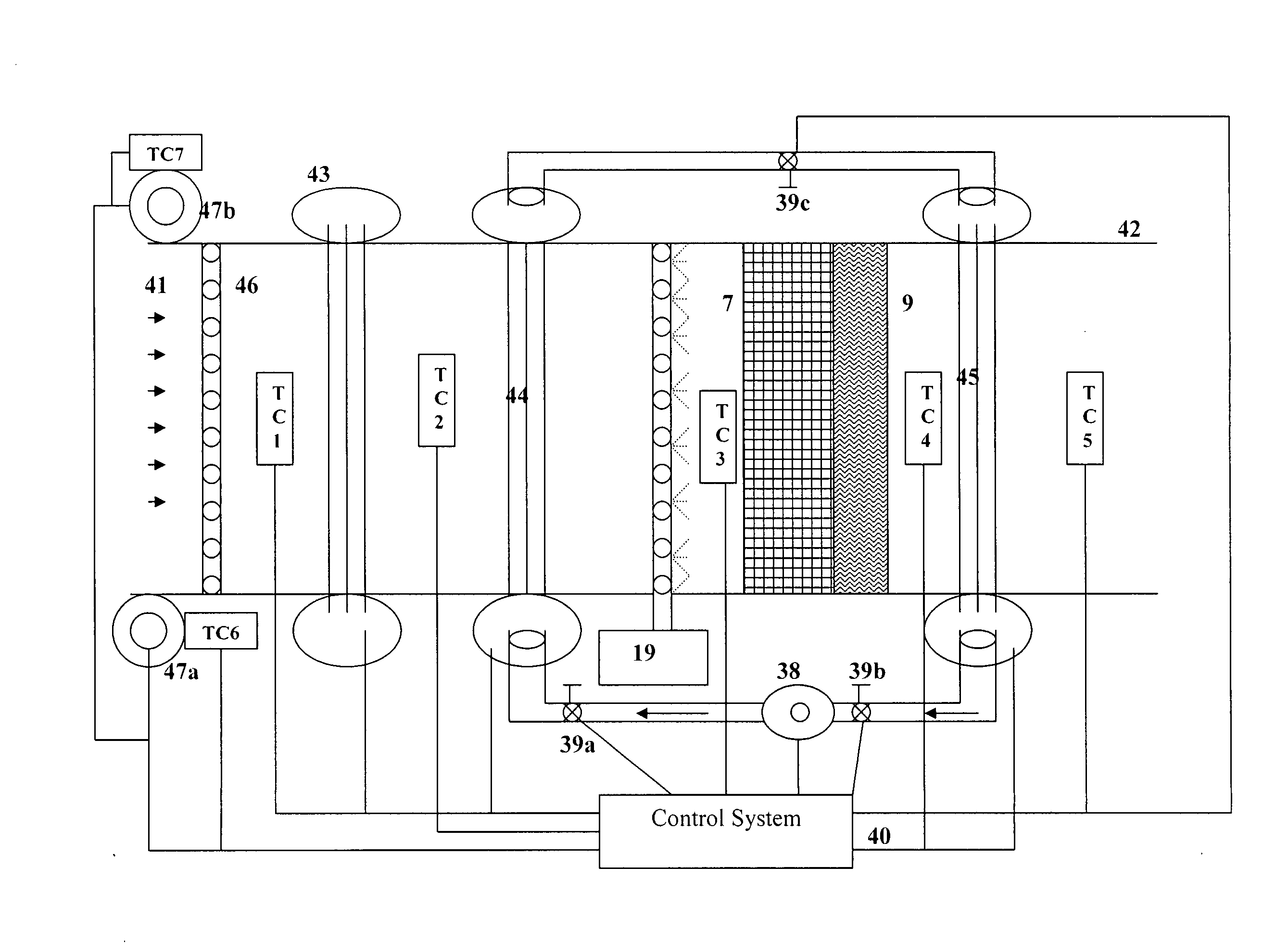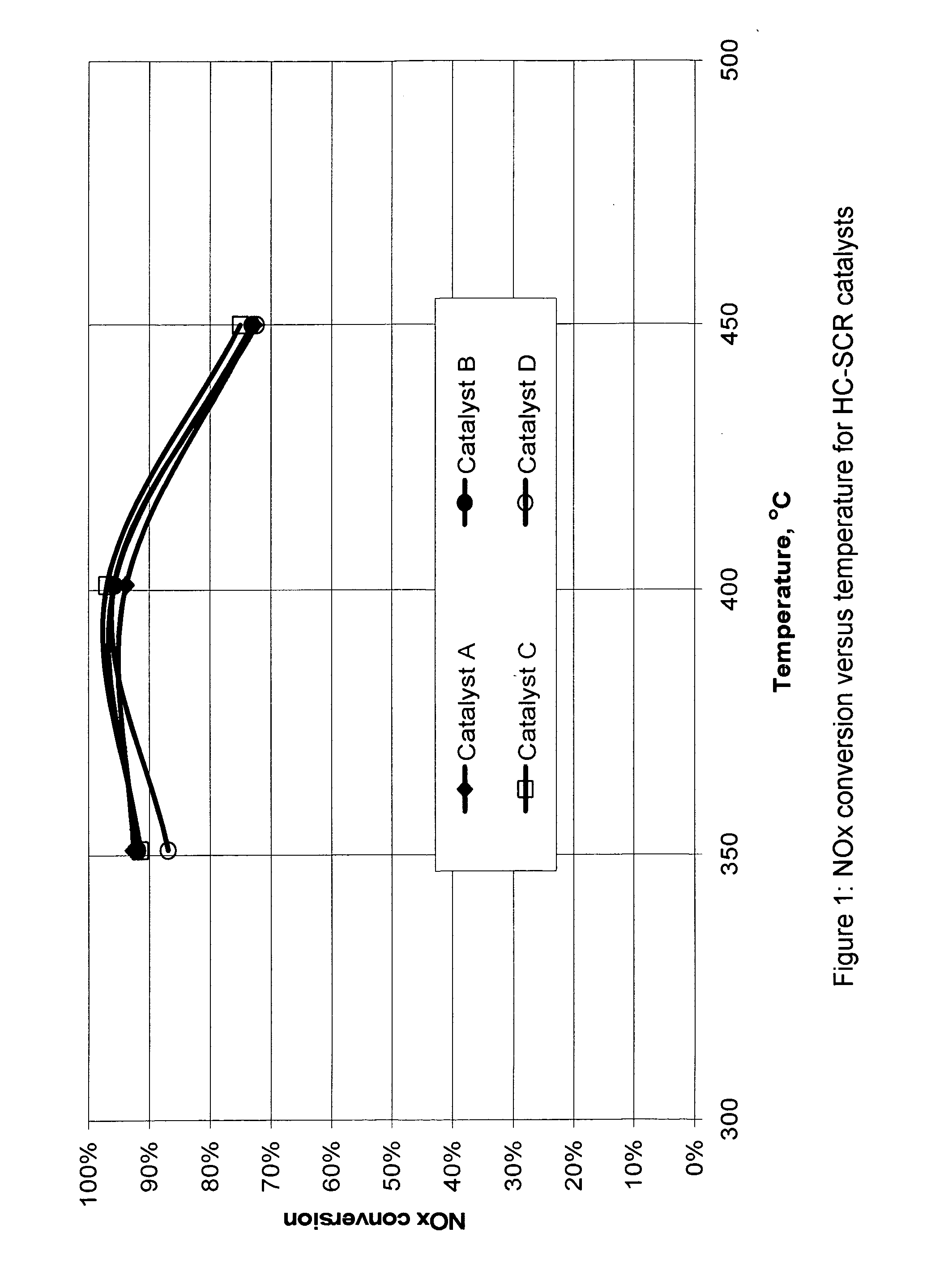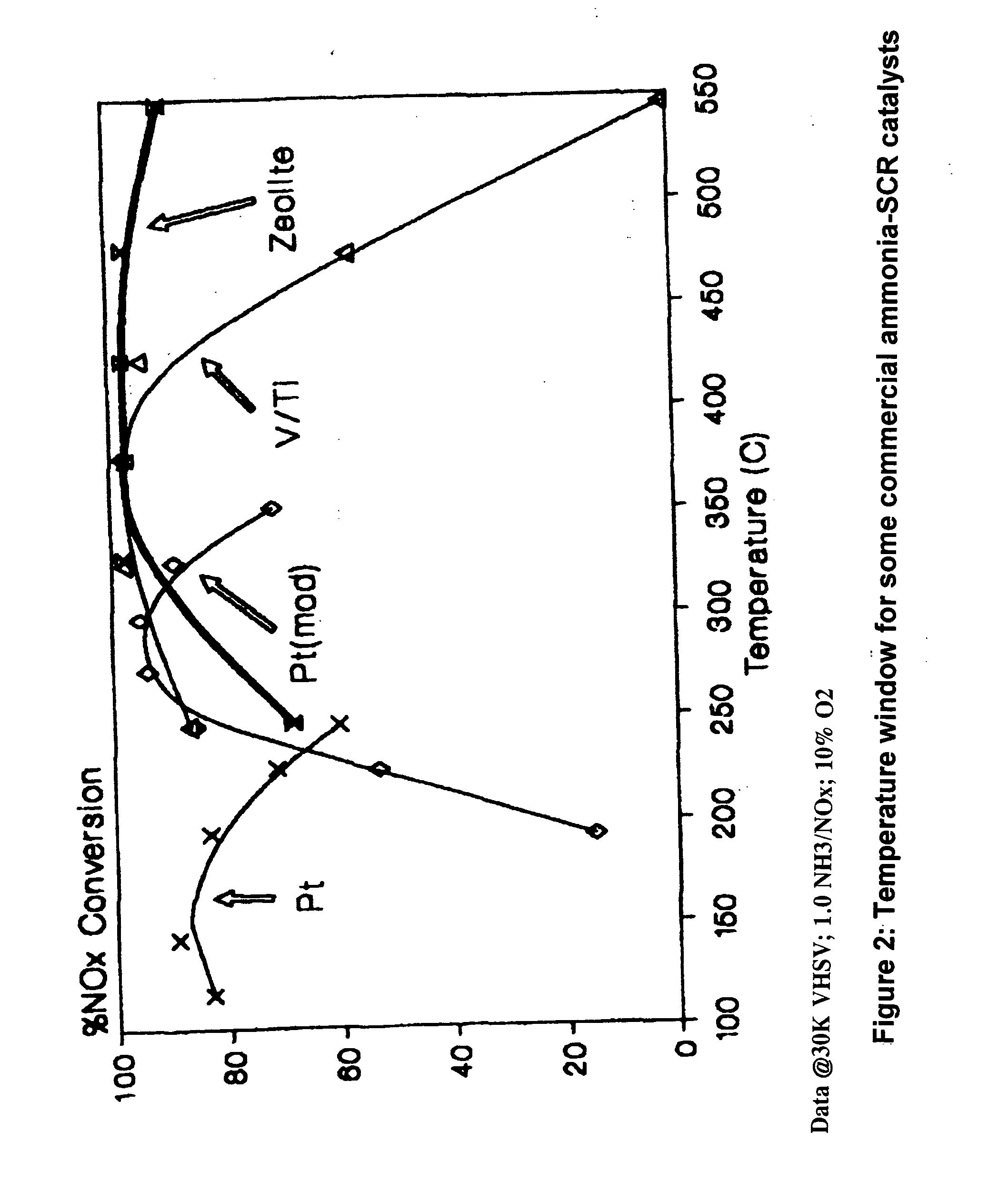Emission reduction system for use with a heat recovery steam generation system
a technology of heat recovery steam and emission reduction system, which is applied in the direction of emission prevention, separation process, and flue gas purification components, can solve the problems of catalyst temperature inconsistent with optimal performance level, high exhaust stream harmful emissions, and catalyst formation, etc., to reduce the size of the reactor, reduce the cost of the hrsg system, and reduce the amount of catalyst
- Summary
- Abstract
- Description
- Claims
- Application Information
AI Technical Summary
Benefits of technology
Problems solved by technology
Method used
Image
Examples
example # 1
EXAMPLE #1
[0058]The temperature of exhaust stream entering the HRSG of a combined cycle combustion gas turbine can be about 600° F. to about 1100° F., more typically about 825° F. to about 1100° F. The amount of exhaust stream entering the HRSG varies considerably depending on the size of the combustion gas turbine used in the application and on varying operating conditions of a particular combustion gas turbine. Even though the amount of exhaust stream may vary, the temperature of this exhaust stream remains within the about 825° F. to about 1100° F. range. This exhaust stream temperature range, however, is too broad and not ideal for existing SCR catalyst technology, thus a much narrower temperature range is desired.
[0059]In a typical HRSG located downstream of a combustion gas turbine, saturated steam is produced in one or more heat exchange sections and sometimes superheated steam, or pre-heated air, or heat-transfer media, etc. are also heated by exchanging heat from the exhaus...
example # 2
EXAMPLE #2
[0066]Basic components of the typical HRSG are shown in FIG. 4A. They are: Duct Firing Burners (31), Superheater Steam Bank (32), High Pressure Boiler Bank (33) Intermediate Pressure Boiler Bank (34), Low Pressure Boiler Bank (35), Economizer (36), and Air Preheater (37).
[0067]Under this invention, the basic HRSG components are arranged to consistently produce an exhaust stream temperature of around 765° F. plus or minus 50° F. at a particular location in the HRSG. Exhaust stream temperature may be raised (very rarely required) via duct burners, or lower (mostly required) via a heat exchange section.
[0068]An embodiment of the present invention produces a fixed exhaust downstream of any particular heat exchanger with the HRSG system. The use of a duct burner can generate excessive temperatures downstream of a particular heat exchanger (e.g. without limitation a tube bank), which can limit or reduce the effectiveness of pollution control catalyst systems. This invention addr...
PUM
| Property | Measurement | Unit |
|---|---|---|
| Temperature | aaaaa | aaaaa |
| Temperature | aaaaa | aaaaa |
| Fraction | aaaaa | aaaaa |
Abstract
Description
Claims
Application Information
 Login to View More
Login to View More - R&D
- Intellectual Property
- Life Sciences
- Materials
- Tech Scout
- Unparalleled Data Quality
- Higher Quality Content
- 60% Fewer Hallucinations
Browse by: Latest US Patents, China's latest patents, Technical Efficacy Thesaurus, Application Domain, Technology Topic, Popular Technical Reports.
© 2025 PatSnap. All rights reserved.Legal|Privacy policy|Modern Slavery Act Transparency Statement|Sitemap|About US| Contact US: help@patsnap.com



